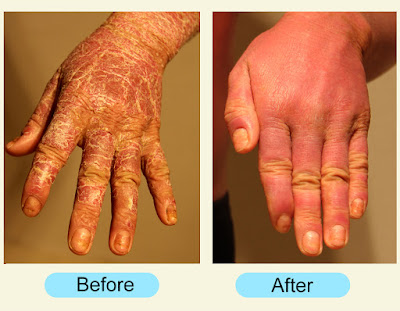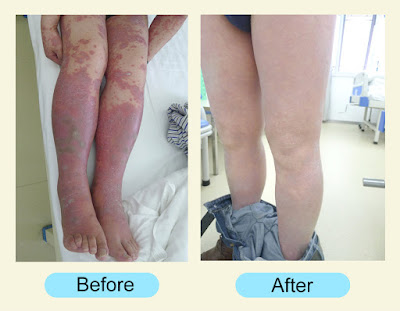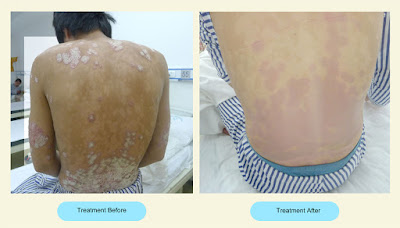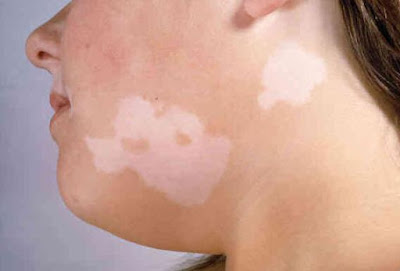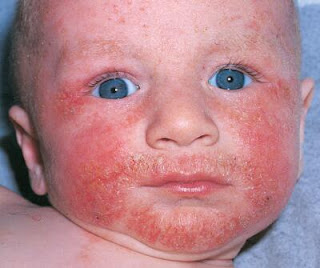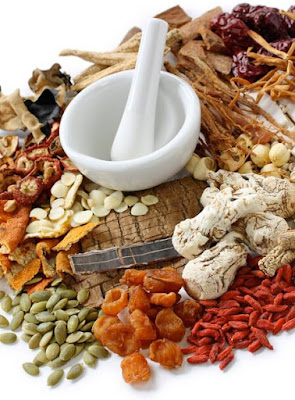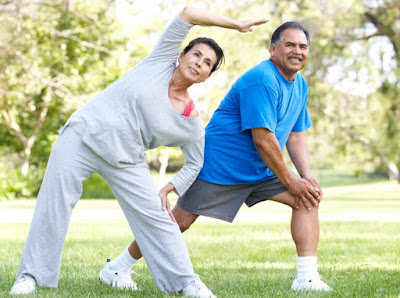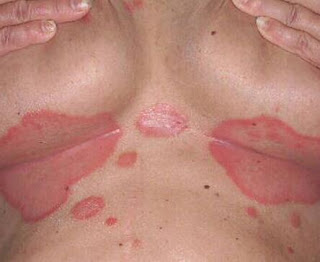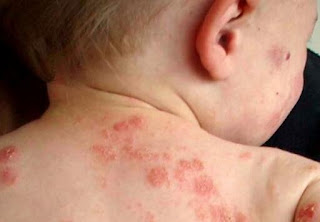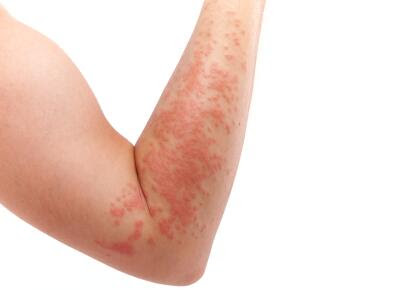Psoriasis may be permanent or episodic, meaning that it can flare up then
subside and disappear altogether for a while before another episode occurs.
Triggers or precipitating factors may cause a flare-up in disease or even lead
to the development of psoriasis, such as emotional stress, local injury to skin,
systemic infections, and the use of certain medications.
Infection such as upper respiratory bacteria or viruses can actually cause someone to develop psoriasis. For example, psoriasis may first appear a few days after one develops strep throat.
Skin injury or any break in the skin can lead to psoriasis. This can include
a razor nick or burn, an insect bite, cut, abrasion, sunburn, needle puncture
(from vaccination), blister or bruise. Patients often find that new lesions
appear at the site of injury.
Medications such as lithium (antidepressant) can also predispose one to a flare-up or cause psoriasis to first appear. Other drugs that can trigger psoriasis or aggravate it include anti-malarials, beta blockers (a type of high blood pressure medication) and an arthritis drug called indomethacin. Even oral corticosteroids can worsen psoriasis symptoms with overuse or if treatment is stopped abruptly.
Stress is a factor in a number of health conditions and seems to be a trigger for psoriasis as well. It can worsen symptoms and, in some cases, a stressful event may trigger the onset of psoriasis. Living with psoriasis also contributes to stress, which in turn, can negatively affect the skin condition.
Weather is another factor that can cause psoriasis to improve or worsen. In particular, the dry cold winter season seems to adversely impact on psoriasis because it dries and irritates the skin. Sun helps psoriatic plaques to fade which suggests why UV light therapy is often used to help treat psoriasis.
Hormones are suspected since puberty can often coincide with the onset of psoriasis symptoms, while pregnancy has been shown to improve or worse psoriasis, depending on the individua
Infection such as upper respiratory bacteria or viruses can actually cause someone to develop psoriasis. For example, psoriasis may first appear a few days after one develops strep throat.
Medications such as lithium (antidepressant) can also predispose one to a flare-up or cause psoriasis to first appear. Other drugs that can trigger psoriasis or aggravate it include anti-malarials, beta blockers (a type of high blood pressure medication) and an arthritis drug called indomethacin. Even oral corticosteroids can worsen psoriasis symptoms with overuse or if treatment is stopped abruptly.
Stress is a factor in a number of health conditions and seems to be a trigger for psoriasis as well. It can worsen symptoms and, in some cases, a stressful event may trigger the onset of psoriasis. Living with psoriasis also contributes to stress, which in turn, can negatively affect the skin condition.
Weather is another factor that can cause psoriasis to improve or worsen. In particular, the dry cold winter season seems to adversely impact on psoriasis because it dries and irritates the skin. Sun helps psoriatic plaques to fade which suggests why UV light therapy is often used to help treat psoriasis.
Hormones are suspected since puberty can often coincide with the onset of psoriasis symptoms, while pregnancy has been shown to improve or worse psoriasis, depending on the individua
